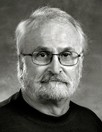- unknown (b.)
Bio/Description
A software pioneer and entrepreneur with over thirty-five years of experience, he began his career specializing in operating systems and database systems. His first company, which he started in 1970, developed operating system improvements for IBM machines. That company introduced Secure, an early software security product. Secure was sold to Boole & Babbage in 1978. He then founded Tesseract Corporation, a human resources software company that introduced the Time Relational Database. Tesseract was sold to Ceridian in 1993. He founded Seeker Software in 1996, which was acquired by Web application company Concur Technologies in 1999. In this oral history Durbin recounts his education at the University of California at Berkeley and early Wells Fargo jobs programming the IBM 650, 1400, and 360 mainframes for online branch banking. He describes his activity in the consulting firm Cybernetic Systems Incorporated, his sole proprietorship of the Institute for Cybernetic Development, and the founding and financing of Tesseract. He also notes his role in the founding of parallel processing software firm Primrose Software and in marketing the Web application system Seeker. Durbin explains the core characteristics of good programming, software engineering, and management. He describes his work in developing network and relational database management systems, and the hegemony of the hierarchical IBM database system IMS (Information Management System). Durbin also explains the importance of integrity in a business prone to marketing vaporware, the impact of IBM's unbundling decision, and the recruiting and retention of women by software firms. He notes the role of the software industry in jobs creation and in endorsing the Black/Scholes options pricing model. Durbin also relates the importance of user groups like ADAPSO to the development of the independent software industry, including ADAPSO?s financial accounting committee and the special interest group Software Industry Association (SIA). This oral history was co-sponsored by CBI, through a National Science Foundation grant project, "Building a Future for Software History," and the Software History Center in conjunction with the Center's ADAPSO reunion (3 May 2002).
-
Gender:
Male -
Noted For:
Founder of a company in 1970 that introduced Secure, an early software security product -
Category of Achievement:
-
More Info:


